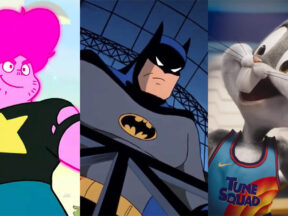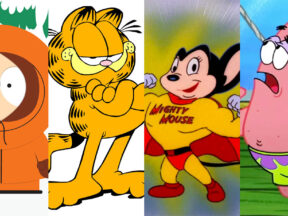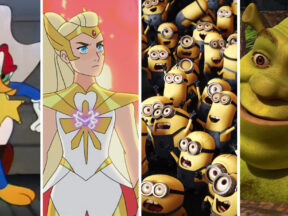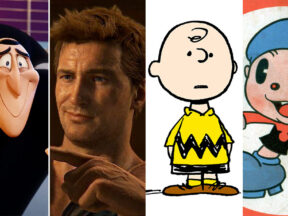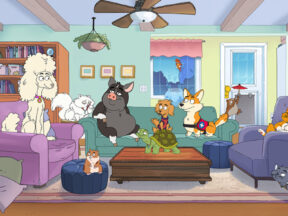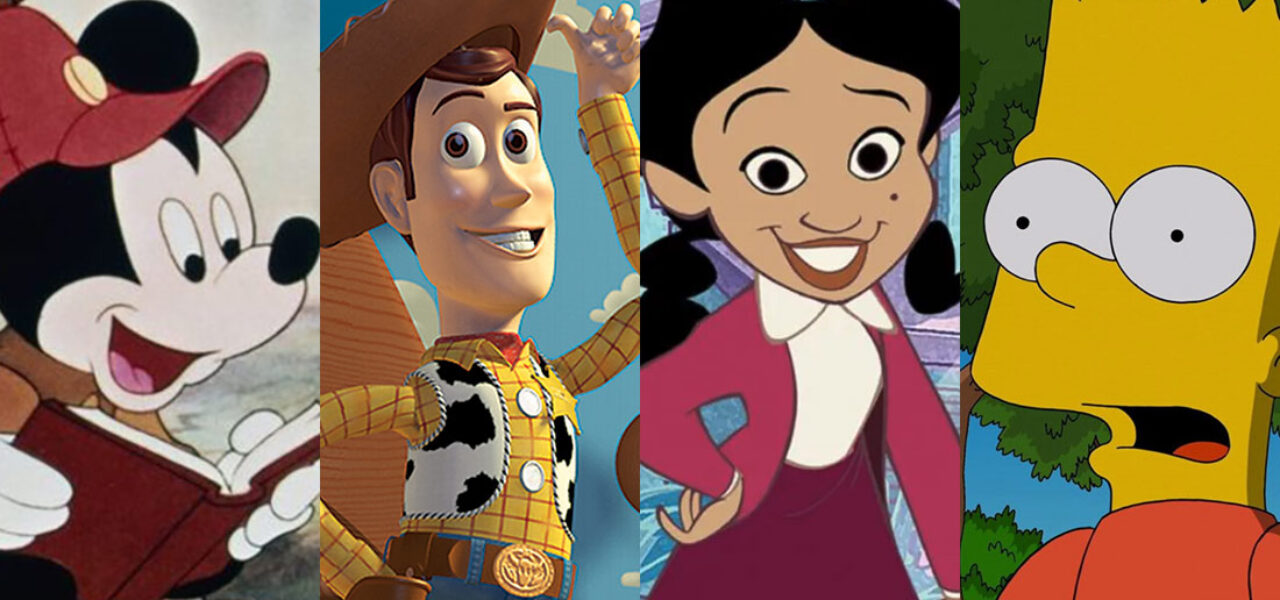
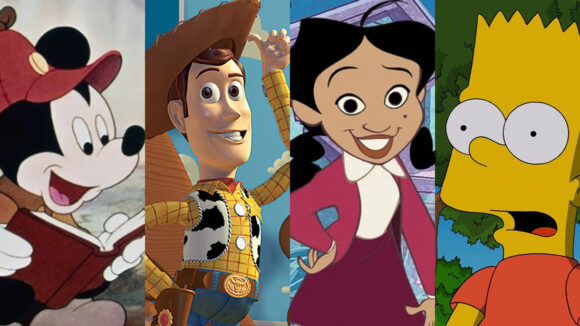
What Animation Does Disney Own?
A continuing series in which we map out what major corporations own in terms of characters, studios, and distribution platforms.
This week’s entry is on The Walt Disney Company, purveyor of many of the world’s most famous animated films, series, and characters. Uniquely among major Hollywood studios, Disney has never been bought by another corporation.
It has, however, pursued highly strategic acquisitions of its own, snapping up Pixar, Marvel, Lucasfilm, and much of 21st Century Fox in the last 15 years. These purchases have swollen its library of content and helped turn it into an entertainment behemoth. The company’s business interests stretch far beyond the animation studio that started it all.
What follows is a list of major animation-related companies/divisions and content Disney owns or co-owns, compiled to the best of our knowledge. This, and future entries in the series, will be updated as new information becomes available. In earlier entries in the series, we explored the animation holdings of Fox Corporation, Sony Group Corporation, Comcast, ViacomCBS, and Warnermedia.
Production and distribution
Walt Disney Pictures, one of Hollywood’s “Big Five” studios. It chiefly produces live-action films, including a run of remakes of Disney animated classics, but was also behind the highest-grossing animated film in history, 2019’s The Lion King.
Walt Disney Animation Studios, the latest incarnation of the company’s flagship animation studio. Founded in 1923, it is one of the oldest animation studios in the world, but it only received its current name in 2007. WDAS pioneered many artistic techniques and industrial practices in hand-drawn animation, demonstrating them in groundbreaking productions like Snow White and the Seven Dwarfs, Fantasia, and One Hundred and One Dalmatians. The studio enjoyed a renaissance in the late 1980s and 1990s thanks to hits like The Little Mermaid and The Lion King. It has more recently produced popular cg films like Frozen and Zootopia.
Pixar Animation Studios, Disney’s second major in-house animation studio. A close partner of Disney’s since its early days, Pixar was eventually acquired by the House of Mouse in 2006. The studio is as important to the history of cg animation as WDAS has been to 2d. Since debuting with 1995’s Toy Story, the world’s first fully cg-animated feature, Pixar has released two dozen features, most of which have been highly successful both critically and commercially. It has won 23 Oscars.
Marvel Studios, which produces films and series based on Marvel Comics superheroes. It has produced series, shorts, and tv and home-video films through its subsidiary Marvel Animation. But What If…?, an upcoming animated series for Disney+, is being produced under the Marvel Studios banner. The company is also set to launch an in-house animation studio.
Lucasfilm, a production company known for the Star Wars and Indiana Jones franchises. It has produced animated features like The Land Before Time and Twice Upon a Time, as well as numerous Star Wars spinoffs (through its subsidiary Lucasfilm Animation). The company is also an effects powerhouse thanks to its division Industrial Light & Magic, a high-profile vfx vendor. Just some of the recent films it has worked on through ILM: Space Jam: A New Legacy, A Quiet Place Part II, and F9: The Fast Saga.
20th Television Animation, the latest incarnation of the studio founded as Fox Television Animation. It produces flagship series like The Simpsons and Family Guy. Following a relaunch in March 2021, it is now developing and producing dozens of series, with a focus on adult audiences.
Disney Television Animation, the sister studio of 20th Television Animation. It is focused on younger viewers, and has produced many hit shows for Disney networks and Disney+. Note: at its Investor Day in December 2020, Disney announced that WDAS and Pixar are expanding into series. It is not yet clear how (or whether) this will impact DTVA.
Broadcast and streaming
Disney+, the company’s flagship streaming service. Launched in late 2019, it has swiftly amassed over 100 million subscribers to become one of the world’s most popular SVOD platforms. Its vast animation library includes the Disney and Pixar catalogues, The Simpsons, and Marvel and Star Wars spin-offs. The service is increasingly the destination of choice for Disney’s family-friendly animated originals; during the pandemic, many films created for theaters, like Pixar’s Soul and WDAS’s Raya and the Last Dragon, ended up as Disney+ exclusives. In India, a major Disney+ market, the service is integrated with local streaming brand Hotstar.
Hulu, another major streamer, in which Disney has a controlling stake. Broadly aimed at older viewers than Disney+, the service combines Disney-owned and licensed content. It houses blue-chip shows like Family Guy and Bob’s Burgers, as well as high-profile originals like Solar Opposites and the Animaniacs reboot. It is also home to the Dreamworks library and a solid anime offering. Outside the U.S., a lot of Disney-owned Hulu content is released under the streaming brand Star.
Disney Channel, which airs animated and other content for children, as do sister networks Disney Junior and Disney XD. Its programming is a mix of in-house productions and third-party content. While still widely available, the networks are gradually being phased out in overseas territories as Disney shifts its focus to streaming.
FXX, a network focused on comedy for young adults. It is home to animated shows like Archer and anthology series Cake, and executives have signaled a desire to push further into animation. Sister network FX, which skews more toward drama, has also aired animation: it was the original home of Archer.
Characters and franchises
Where to start? Disney, king of brands, owns what may well be the most recognizable roster of animated properties in the world. Some of its iconic characters were designed in the studio’s early days: Mickey and Minnie Mouse, Donald Duck, Pluto, Goofy, Jiminy Cricket. Others came later: Baloo, Ariel, Jafar, Simba, Elsa … the list goes on.
On the tv side, the House of Mouse owns plenty more popular shows and related characters: Pepper Ann, Phineas and Ferb, Gravity Falls, Gummi Bears, Doc McStuffins, The Proud Family, The Owl House, Elena of Avalor, and others besides.
Via Pixar, Disney owns another trove of globally popular characters and franchises: Toy Story, The Incredibles, Finding Nemo, and Monsters, Inc., to name a few. It also owns Lucasfilm and therefore Star Wars and Indiana Jones, as well as Marvel. Note: Disney doesn’t fully control all Marvel characters, with Spider-Man and The Hulk among those for whom it shares rights with other entities.
Disney’s acquisition of Blue Sky Studios, which it subsequently shut, has left it with a couple of lucrative franchises, especially Ice Age and Rio. The company also owns other animated features from the 20th Century Fox library, including Ferngully: The Last Rainforest, hybrid title The Pagemaster, and Don Bluth productions like Thumbelina, Anastasia, and Titan A.E.
In The Simpsons, Disney owns one of the most influential series of all time, animated or otherwise. Bob’s Burgers, Family Guy, King of the Hill, and Futurama are among its other popular animated sitcoms. It is also home to The Muppets, having acquired the IP from The Jim Henson Company in 2004.
Disney is good at developing its IP not just through films and series, but also through derivative products and experiences. Merchandising is sold through its network of Disney Stores (which is diminishing in favor of online shopping). The company operates a famous set of theme parks, although it doesn’t own all Disney-branded parks: Tokyo Disney Resort, for example, is owned and run by a partner under a license from Disney.

